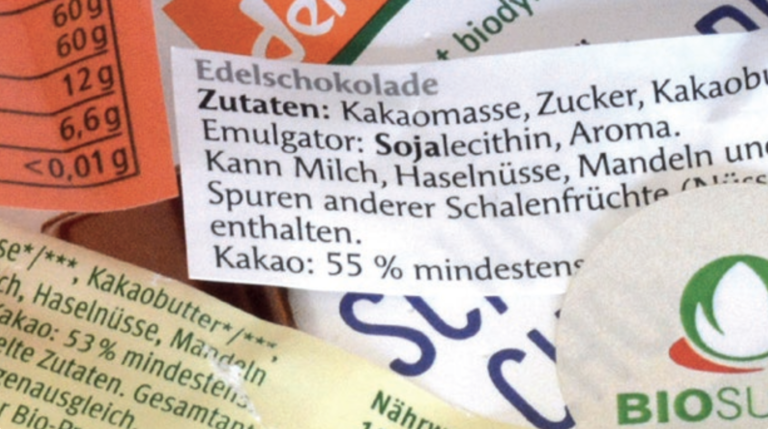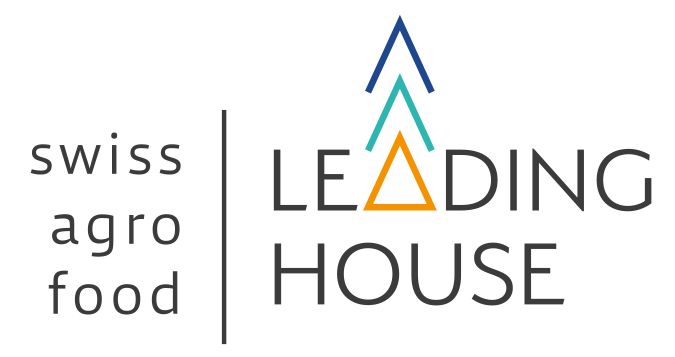Label generator including recipe and nutrition calculator for direct marketing and small-scale processors
by Michèle Hürner

Project Objective
The goal of this project is to develop a comprehensive tool that enables small-scale processors and farms to create recipes, adjust them to different quantities, calculate the nutritional values of their products, and generate labels that comply with legal requirements as well as Bio Suisse and Demeter standards.
Background
Small-scale processors and farms that produce and sell food require efficient tools for recipe adjustment, nutritional value calculation, and label generation. These functions are crucial to ensure regulatory compliance, inform customers about ingredients, and bring competitive products to market. Many direct marketers and farm processors struggle with these tasks both in terms of content and time, as evidenced by the daily work of Bio Suisse (offering free label verification for members), FiBL, agricultural schools (advisory services), control bodies, and affected individuals. Regulations are also becoming increasingly stringent, and since 2021, a nutritional value table has been required for certain farm products.
Related articles:
- Article on common deficiencies in organic certification (bioaktuell.ch)
- When is a nutritional table required? (bioaktuell.ch)
Features of the Comprehensive Label Generator
Recipe Calculator
The platform allows users to create, save, edit, and share recipes for their products. The ability to adjust quantities is particularly important, as small-scale and farm processors need to account for the availability of raw materials (e.g., the number of kilograms of harvested fruit). Unlike in industrial production, ingredients often change.
Nutritional Value Calculation
The tool automatically calculates the nutritional values of each recipe by connecting to a nutritional value database. It considers various nutritional parameters such as calories, fat, carbohydrates, proteins, vitamins, and minerals based on the ingredients and their quantities.
Label Generator
Once a recipe is created, the tool automatically generates labels for the corresponding products. The labels contain all legally required information, including the list of ingredients, nutritional values, allergen warnings, and expiration date. Additionally, users will have the option to generate labels that comply with Bio Suisse, Demeter, and organic regulatory requirements when applicable. In such cases, additional details, such as the country of origin of ingredients, must be provided.
Customization Options
Users can adapt the generated labels to their brand identity by adding logos, colors, and fonts.
Compliance Verification
The tool provides warnings when necessary to help avoid errors and ensure regulatory compliance.
The use of this tool is not limited to organic businesses.
Technical Implementation
The software will be developed as a web-based application to ensure easy and universal accessibility (across various devices and for multiple users). It will feature a user-friendly interface (with a strong focus on UX design) and be built on a robust infrastructure. Data protection, particularly confidentiality and security of recipes, will be a top priority.
Costs and Risks
Expected costs include development, design, programming, testing, implementation (including communication measures), and maintenance. A detailed budget plan will be created during the incubation phase to assess the financial feasibility of the project, which is currently considered the greatest risk. Long-term support and further development require a sustainable management structure, which must be established.
On which opportunity statement is your idea based on?
Creating a correct label for an organic farm product is not a trivial task, as shown by various course feedback, inquiries, and deficiencies identified during inspections. See the appendix for the existing tools, which are currently insufficient. Additionally, legal requirements are becoming increasingly strict. While large companies can afford their own software or use professional tools, this is not feasible for farm processing or small-scale production, requiring significant manual effort instead. These small-scale producers are often the real innovators.
What makes your idea radical?
It would be a significant step forward for local value creation if we could support direct marketing with a comprehensive label generator. The innovation lies in integrating existing tools into a new, combined, and affordable (or even free for users) software solution. A first step towards a label generator was already taken in March during the Open Farming Hackdays in the Canton of Aargau, which could serve as a foundation for further development.
What is your expected impact and transformation potential?
We expect the following benefits:
- Efficient product development and labeling for small-scale and farm-based processors.
- Compliance with legal regulations and prevention of compliance issues. Correct labels:
- Improve food safety.
- Enhance transparency.
- Protect against deception.
- Professionalize direct marketing and strengthen overall brand presence.
- Time and cost savings by automating currently manual processes.
- Increased competitiveness of direct marketing with reduced effort.
- Improved accessibility leading to an expansion of farm-based processing.
- More resources available for product development and production.
The tool should be developed primarily for organic producers, as these labels require the highest level of declaration and sustainability standards.
A simplified version for other businesses would not be a major hurdle but would require support from advisory institutions or organizations such as the Swiss Farmers’ Association.
How do you want to work on your idea? What is needed to accomplish it?
To further develop the idea, we need a study of existing interface-compatible tools and workshops with the following groups:
- Detailed specification of requirements: Bio Suisse processing, FiBL, organic control bodies, and cantonal direct marketing advisory services.
- Feasibility assessment: Interviews with software providers already active in the field of direct marketing. Cost estimation.
- Clarification of governance: Discussions with potential stakeholders to ensure the long-term quality and sustainability of the tool.
- Prototype development: Ensuring optimal UX through user testing.
